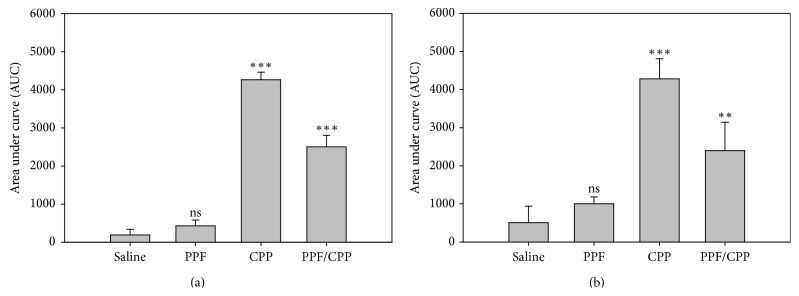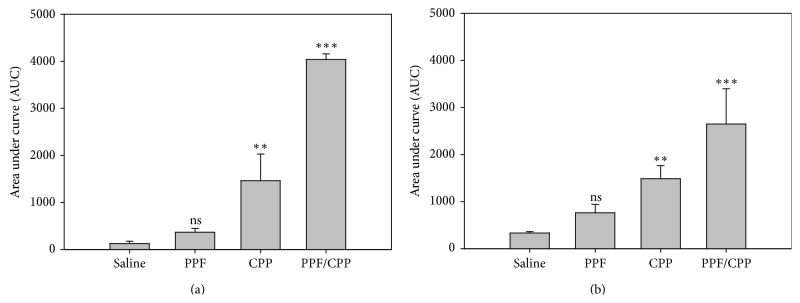Electrophysiological Study of the Antinociception Produced by the Coapplication of (±)-CPP and Propentofylline in Monoarthritic Rats.
引用次数: 1
Abstract
The NMDA receptor is central in the generation and maintenance of chronic pain. This receptor has several sites of modulation. One is the glutamate recognition site that can be blocked by (±)-3-(2-carboxypiperazin-yl)propyl-1-phosphoric acid or (±)-CPP. We investigated whether the effect of glial inhibition produced by propentophylline (PPF) can be enhanced when combined with (±)-CPP. We used Sprague-Dawley rats with experimental monoarthritis, administering intrathecally the ED30 for both drugs (3.97 μg of (±)-CPP and 1.42 μg of PPF), since this combination produces an antinociceptive supra-additive effect when used in mechanical nociception (Randall-Selitto test). The combination of (±)-PPF and CPP produced an antinociceptive effect which was greater than that each drug alone as tested by both the C reflex and windup. We conclude that the antinociceptive effect of the combination of (±)-PPF and CPP possibly generates a supra additive interaction type in monoarthritic rats.


(±)-CPP与丙烯茶碱共同作用对单关节炎大鼠抗痛作用的电生理研究。
NMDA受体在慢性疼痛的产生和维持中起着中心作用。这种受体有几个调节位点。一种是谷氨酸识别位点,可被(±)-3-(2-羧基哌嗪基)丙基-1-磷酸或(±)- cpp阻断。我们研究了当与(±)-CPP联合使用时,是否能增强原戊茶碱(PPF)对神经胶质细胞的抑制作用。我们使用患有实验性单关节炎的Sprague-Dawley大鼠,在鞘内给予两种药物ED30((±)-CPP 3.97 μg和PPF 1.42 μg),因为这种组合在用于机械性伤害感受时产生抗伤害性超加性作用(Randall-Selitto试验)。(±)-PPF和CPP联合用药产生的抗伤害感受作用大于单独用药。我们认为(±)-PPF和CPP联合作用可能在单关节炎大鼠中产生超加性相互作用。
本文章由计算机程序翻译,如有差异,请以英文原文为准。
求助全文
约1分钟内获得全文
求助全文

 求助内容:
求助内容: 应助结果提醒方式:
应助结果提醒方式:


